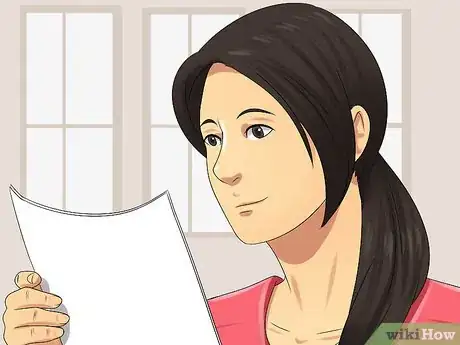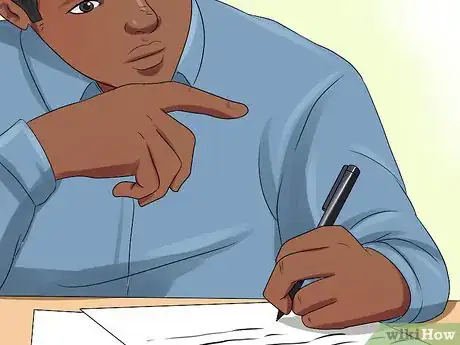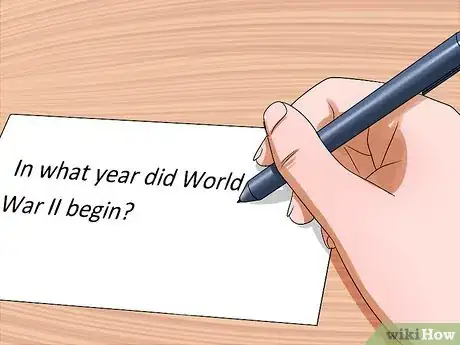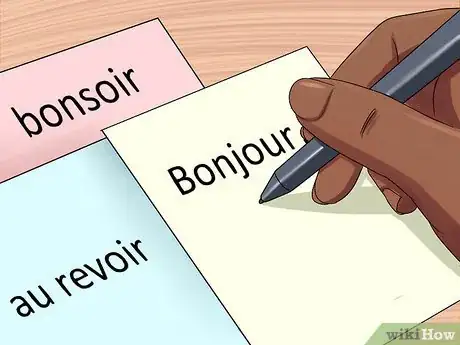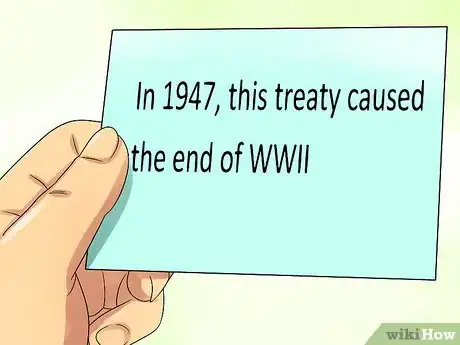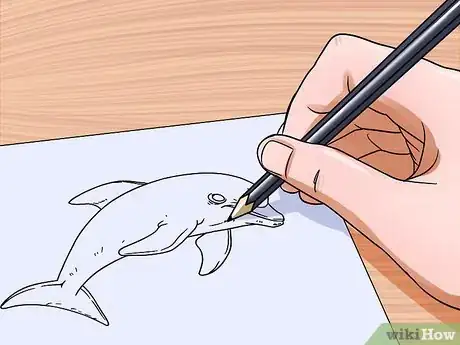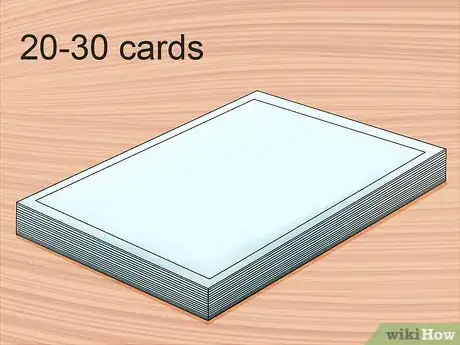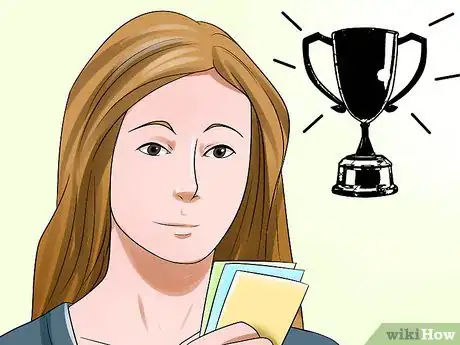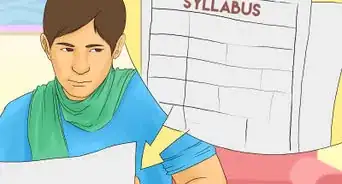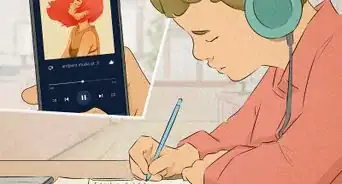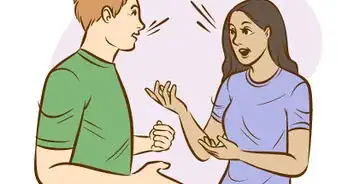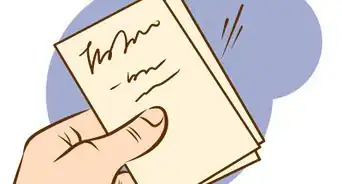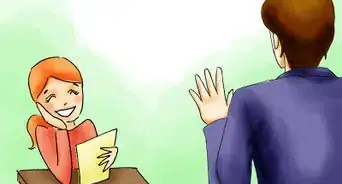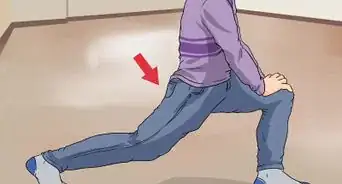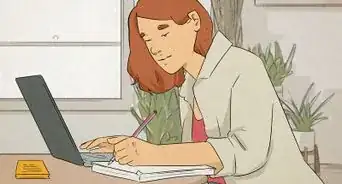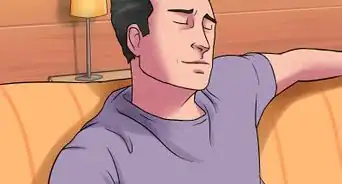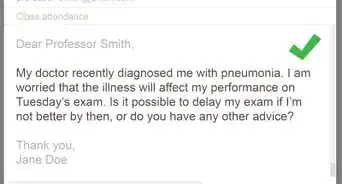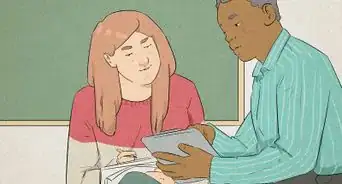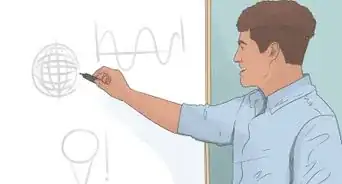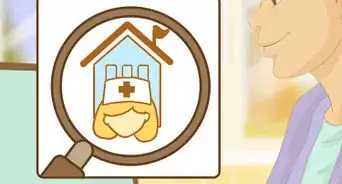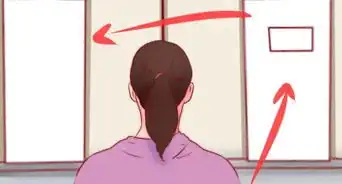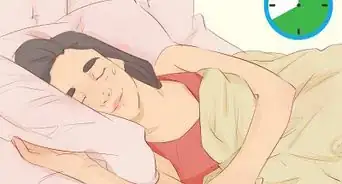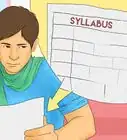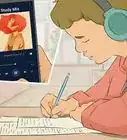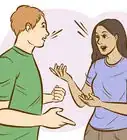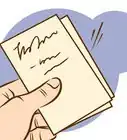This article was co-authored by Christopher Taylor, PhD. Christopher Taylor is an Adjunct Assistant Professor of English at Austin Community College in Texas. He received his PhD in English Literature and Medieval Studies from the University of Texas at Austin in 2014.
There are 8 references cited in this article, which can be found at the bottom of the page.
wikiHow marks an article as reader-approved once it receives enough positive feedback. In this case, 82% of readers who voted found the article helpful, earning it our reader-approved status.
This article has been viewed 124,534 times.
Flashcards are called flash for a reason. They aid in quickly memorizing fast facts, quotes, vocabulary words, dates, and much more. Many make the mistake of putting too much information on a flashcard, which makes them difficult to read, understand, and memorize. When used correctly, however, flashcards are a great on-the-go study resource that allow you to learn virtually anywhere!
Steps
Gathering Your Materials
-
1Purchase or make flashcards. Index cards come in different sizes and colors. The most standard size is 3 by 5 inches (7.6 by 12.7 cm). You can also get mini flash cards on a binder ring. Some find these easier to keep track of, and they also fit inside your pocket for easy studying on the run.[1]
- You could also make flash cards too if you have lots of blank papers. All you need is a piece of paper or an A4 size sheet and cut it in equal sizes.
- You can also buy a hole puncher and a binder ring for standard sized flashcards. Or, most office supply stores sell plastic cases designed to carry flashcards.
-
2Get a variety of pens, pencils, and markers. It’s helpful to use a few different colors on your flashcards. Coloring your notes helps key terms to stand out and be more memorable. Be sure to purchase a good black pen for the bulk of your writing.[2]Advertisement
-
3Organize your notes before writing your flashcards. Reread your class notes or textbook so that you can pick out the key information you want on your cards. It won’t be helpful to cram a ton of information on each card. Try to be discerning in your choices to keep your brain less cluttered when studying.
- If you're studying for a test, make sure you know what information is going to be covered on the exam. This way you won't waste time writing down facts that have already appeared on previous exams or might be on future ones.
-
4Write a list of what you want to use on your cards. Go through your class notes and write down every fact that you plan to use on your flashcards in the most concise language possible. Include information such as dates of important events, names of important figures and what they accomplished, and names and brief definitions of important theories.
- This practice not only helps you focus the scope of what you'd like to include on your flashcards, but also aids in memorization. The repetition of rewriting the information a few times makes you more likely to remember it during your exam.[3]
- If you don’t have time to rewrite your notes, go through them and highlight important facts, concepts, dates, people, and definitions that you want to include on your flashcards.
-
5Try out online flashcards. For those who prefer computers to paper, you can now make flashcards online with certain websites such as https://quizlet.com/. Certain companies, such as Chegg Flashcards, also make apps for your phone so that you can study on the go.
- Check out http://appadvice.com/appguides/show/flashcard-apps-for-the-ipad for a list of the best flashcard apps.
Writing Your Cards
-
1Keep content short. Flashcards aren’t textbooks. You don’t want to overload them with paragraphs of information. When you look at a flashcard, you should be able to absorb the information in a quick glance.
- Flashcards are most effective if used for learning dates, vocabulary, historical events, scientific terms, processes, equations, and information that’s easy to memorize. Don’t use flashcards for in depth analysis.
- If you’re studying WWII, for example, don’t try to use your tiniest handwriting to fill a whole card with an analysis on the events that caused the war. Instead, try breaking the information into smaller chunks on various cards with factual information such as: “In what year did World War II begin?” on one side, and “1937” on the other side.
-
2Use one term only per card. There’s only so much information your brain can absorb at once. To better retain information, only put one term on each card.
- For instance, if you’re learning French, instead of putting “Hello, goodbye, and good evening” on the front side of one card and “bonjour, au revoir, and bonsoir” on the other, break these up into three separate cards with “hello,” “goodbye,” and “good evening” on one side, and “bonjour,” “au revoir,” and “bonsoir” on the other.
-
3Write content so both sides of card can be a starting point. Studies show that the most effective way to use flashcards is to make both sides of the card a potential starting point. This means that instead of having one side of a card be a question and the other the answer, you will need to make both sides of the card have unique information.
- For example, say you’re trying to quiz yourself on the end of WWII. Instead of writing a card that has the question on one side: “What treaty signified the end of WWII?” and then “The Paris Peace Treaties” on the other, try rewording to “In 1947, this treaty caused the end of WWII” and then “The Paris Peace Treaties” on the other side. This way, even if you get the side with more information, you can fill in the “this treaty” with the correct information.
-
4Add pictures. Studies show that adding pictures to your flashcards will make them more memorable. It only takes our brain 13 milliseconds to recognize an image, which means that putting visuals on your cards will help you remember information faster.[4] [5]
- Make sure the image you choose correlates to the information on the card. For example, if you’re writing German vocabulary cards, don’t draw a picture of a rainbow next to the word for boy.
- These don’t have to be great works of art! Even a small sketch that relates to the text will be a great trick for remembering information faster.
- Note that it’s easier to add visuals on digital flashcards than those made by hand.
-
5Limit your deck to 20-30 cards. Don’t overdo it when you’re creating a deck of flashcards. Your brain won’t be able to process too much information at once. Limit your deck to 20-30 cards that deal with related subject matter.
- Even if you’re studying a subject that warrants hundreds of flashcards worth of information, try to break your deck into smaller units. For example, if you’re taking a class on Jane Austen, make a deck of 20-30 cards for each book that you read instead of randomly cramming information from all the books onto 100-200 cards.[6]
Using Your Cards
-
1Set a goal to review at least three times a day. Repetition is key when trying to learn new information. Quiz yourself in the morning, afternoon, and evening to progress as rapidly as possible.[7]
- Set an alarm on your phone for a few different times a day to remind yourself that it’s time to study!
-
2Keep your flashcards in your backpack or purse. Having your cards accessible means that you can study at any time. Make sure your cards are either on a binder ring or in a case and pull them out at lunch, coffee breaks, on your walk home, or during any other downtime. [8]
- An advantage of making flashcards by hand is that you can carry and study them anywhere, which you may not be able to do with digital flashcards.
-
3Study with a friend. Flashcards are great because you can use them by yourself, but learning is usually more fun with a friend. Find a study buddy and go through the cards aloud together a few times a week. Studying with other people also tends to increase your motivation to succeed.[9]
-
4Consider a card done after two days. Some people make the mistake of getting a flashcard right one time and then casting it aside. Don’t consider a flashcard completed until you can answer it correctly for two days in a row. Then, put it aside for a bit and move on to a new one, but be sure to come back to it in a week to refresh your memory.[10]
-
5Recite your flashcards out loud. Simply reciting terms and definitions can greatly improve your chances of remembering them!
Expert Q&A
Did you know you can get expert answers for this article?
Unlock expert answers by supporting wikiHow
-
QuestionWhat are flashcards used for?
 Christopher Taylor, PhDChristopher Taylor is an Adjunct Assistant Professor of English at Austin Community College in Texas. He received his PhD in English Literature and Medieval Studies from the University of Texas at Austin in 2014.
Christopher Taylor, PhDChristopher Taylor is an Adjunct Assistant Professor of English at Austin Community College in Texas. He received his PhD in English Literature and Medieval Studies from the University of Texas at Austin in 2014.
English Professor
-
QuestionAre flashcards effective for studying?
 Christopher Taylor, PhDChristopher Taylor is an Adjunct Assistant Professor of English at Austin Community College in Texas. He received his PhD in English Literature and Medieval Studies from the University of Texas at Austin in 2014.
Christopher Taylor, PhDChristopher Taylor is an Adjunct Assistant Professor of English at Austin Community College in Texas. He received his PhD in English Literature and Medieval Studies from the University of Texas at Austin in 2014.
English Professor
-
QuestionHow do you write flashcards?
 Christopher Taylor, PhDChristopher Taylor is an Adjunct Assistant Professor of English at Austin Community College in Texas. He received his PhD in English Literature and Medieval Studies from the University of Texas at Austin in 2014.
Christopher Taylor, PhDChristopher Taylor is an Adjunct Assistant Professor of English at Austin Community College in Texas. He received his PhD in English Literature and Medieval Studies from the University of Texas at Austin in 2014.
English Professor
Warnings
- Don’t just study with flashcards. Since they’re just meant for memorizing facts, be sure to also read books and articles on your subject as well to get a full picture.⧼thumbs_response⧽
References
- ↑ https://www.youtube.com/watch?v=p3-o0pxDrL0
- ↑ http://www.fastcompany.com/3009605/work-smart/how-color-coded-notes-make-you-a-more-efficient-thinker
- ↑ http://psychcentral.com/lib/top-10-most-effective-study-habits/2/
- ↑ https://news.mit.edu/2014/in-the-blink-of-an-eye-0116
- ↑ https://fluent-forever.com/create-better-flashcards/
- ↑ https://fluent-forever.com/create-better-flashcards/
- ↑ http://www.persistenceunlimited.com/2006/07/the-no-fail-flashcard-study-technique-fast-learning-minimal-time/
- ↑ http://www.persistenceunlimited.com/2006/07/the-no-fail-flashcard-study-technique-fast-learning-minimal-time/
- ↑ https://www.imc.edu.au/news-archive/8-benefits-of-studying-with-friends
About This Article
All you need to make your own flashcards are index cards, pens or markers, and your study notes. Start with a deck of 20 to 30 cards for your chosen subject. Choose one term to write on each card. Turn each card over and write what you need to remember about that particular term as succinctly as possible. For example, write "hello," on one side of the flashcard and "bonjour," on the other. You can also add related pictures or diagrams to your flashcards. This will help you remember information faster. Once you’ve completed your flashcards, try to review them at least 3 times per day. Repetition is important when you’re trying to learn new information, so going through your flashcards in the morning, afternoon, and evening will be useful. For more information from our English Literature co-author, like how to use online flashcards, read on.


